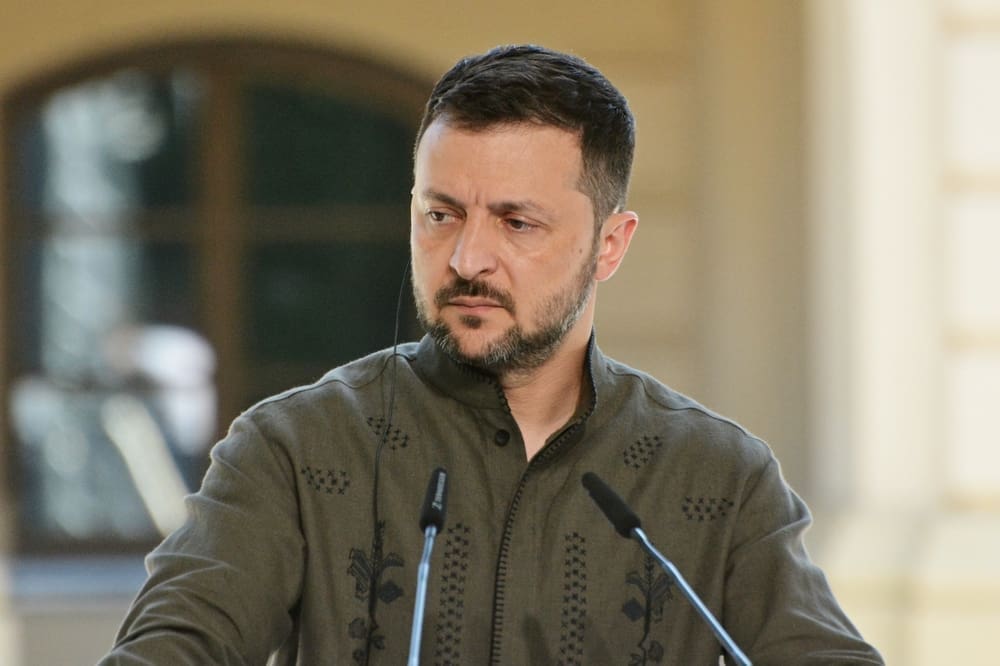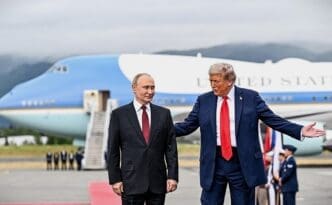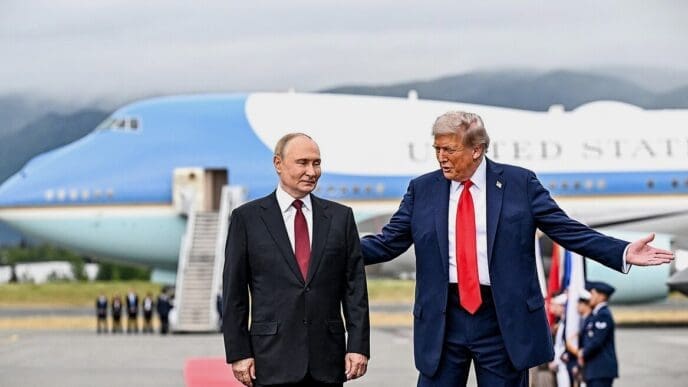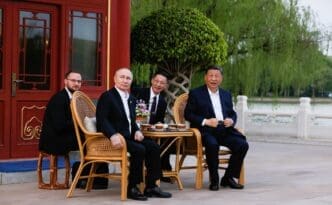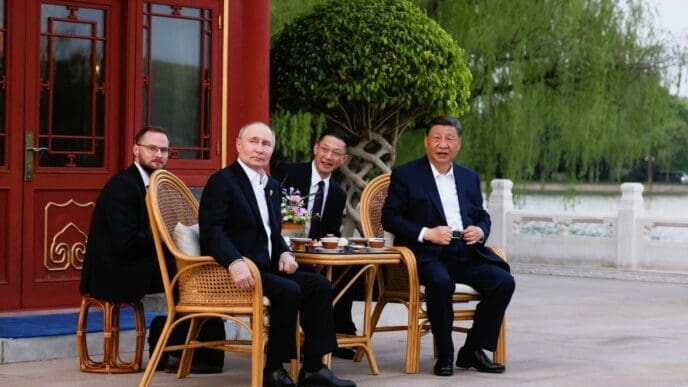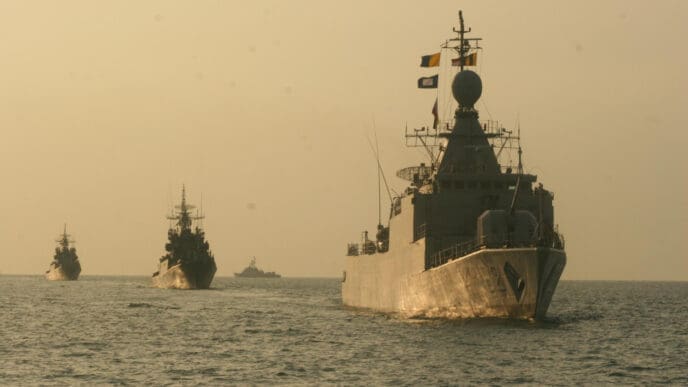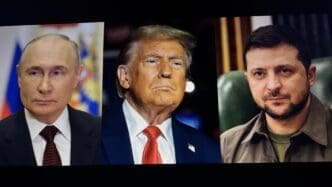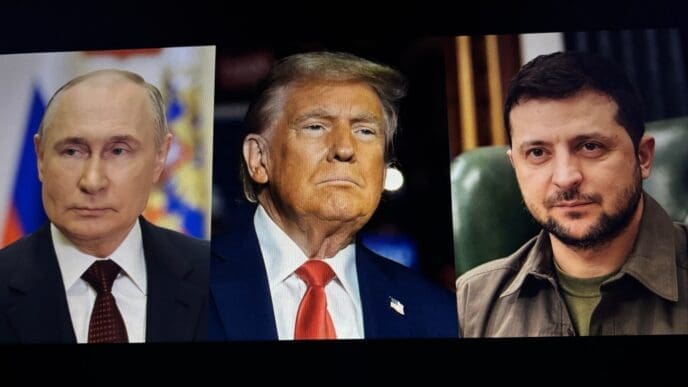Executive Summary
The Story So Far
Why This Matters
Who Thinks What?
Ukrainian President Volodymyr Zelensky stated that Russia’s refusal to agree to a ceasefire is hindering efforts to end the ongoing conflict, a day before he is set to meet with President Donald Trump in Washington D.C. Trump, who recently held a summit with Russian President Vladimir Putin, has expressed a desire to bypass a ceasefire and move directly to a permanent peace agreement, a shift from his earlier calls for a rapid cessation of hostilities.
Zelensky’s Stance
In a statement on X, Zelensky affirmed that Russia “rebuffs numerous calls for a ceasefire and has not yet determined when it will stop the killing,” which he said complicates the situation. Following a phone call with Trump after the US-Russia summit, the Ukrainian leader called for a “real, lasting peace,” emphasizing that “the fire must cease” and killings stop.
Zelensky later outlined Ukraine’s requirements for a “truly sustainable and reliable peace,” which include a “credible security guarantee” and the return of children he asserts were “abducted from occupied territories” by Moscow.
Trump’s Shifting Position
President Trump had previously called for a ceasefire “rapidly” before his summit with President Putin, even threatening economic sanctions against Russia if one was not agreed upon. However, following Friday’s summit, Trump wrote on Truth Social that bypassing a ceasefire and moving directly to a permanent peace agreement would be “the best way to end the horrific war,” arguing that ceasefires often “do not hold up.”
Trump is said to have relayed a peace offer from Putin to Zelensky during their call. This offer reportedly suggests Ukraine withdrawing from the Donetsk region of the Donbas in exchange for Russia freezing the front lines in Zaporizhzhia and Kherson. Russia claims the Donbas as its territory, controlling most of Luhansk and about 70% of Donetsk, and illegally annexed Crimea in 2014.
Trump has previously indicated that any peace deal would involve “some swapping of territories.” However, just days prior, Ukraine’s president ruled out ceding control of the Donbas, stating it could be used as a springboard for future Russian attacks.
International Reactions and Concerns
The BBC’s US partner CBS reported, citing diplomatic sources, that European officials were concerned Trump might attempt to pressure Zelensky into agreeing to terms discussed at Friday’s summit during their Monday meeting. CBS quotes sources indicating that Trump had told European leaders Putin would make “some concessions,” though these were not specified.
When asked for advice for the Ukrainian leader in a Fox News interview after the US-Russia summit in Alaska, Trump responded, “Make a deal.” He added, “Russia’s a very big power and they’re not.”
Despite Trump’s earlier threat of “very severe consequences” and a deadline for Moscow to reach a ceasefire, the two leaders concluded Friday’s talks without a concrete agreement, though both insisted progress had been made. On Saturday, Putin described the summit as “very useful,” stating he had been able to “set out our position” and discuss “the genesis, about the causes of this crisis.”
Dmitry Polyanskiy, Russia’s first deputy permanent representative to the UN, told BBC Newshour that the summit was “a very important building block for further efforts” to end the war, adding that “everybody who wanted peace should be satisfied by the outcome.”
European leaders, including German Chancellor Friedrich Merz, French President Emmanuel Macron, and European Commission President Ursula von der Leyen, reacted with caution but noted “significant progress” on the US’s readiness to provide security guarantees for Ukraine—a key request from Zelensky and the “coalition of the willing” (including the UK, France, and Germany). They stressed that “it will be up to Ukraine to make decisions on its territory” and that “international borders must not be changed by force.”
UK Prime Minister Sir Keir Starmer praised Trump’s efforts, stating they had “brought us closer than ever before,” but emphasized that the “path to peace in Ukraine cannot be decided without” Zelensky. In Kyiv, some Ukrainians expressed feeling “crushed” by the scenes from Alaska, with one veteran describing the “spectacle with the red carpet and the kneeling soldiers” as “terrible.”
Upcoming Meeting
The upcoming White House meeting on Monday will be Zelensky’s first with Trump since a tense encounter in February. The two appeared to reconcile in April during a “very productive” 15-minute meeting on the sidelines of Pope Francis’s funeral.


